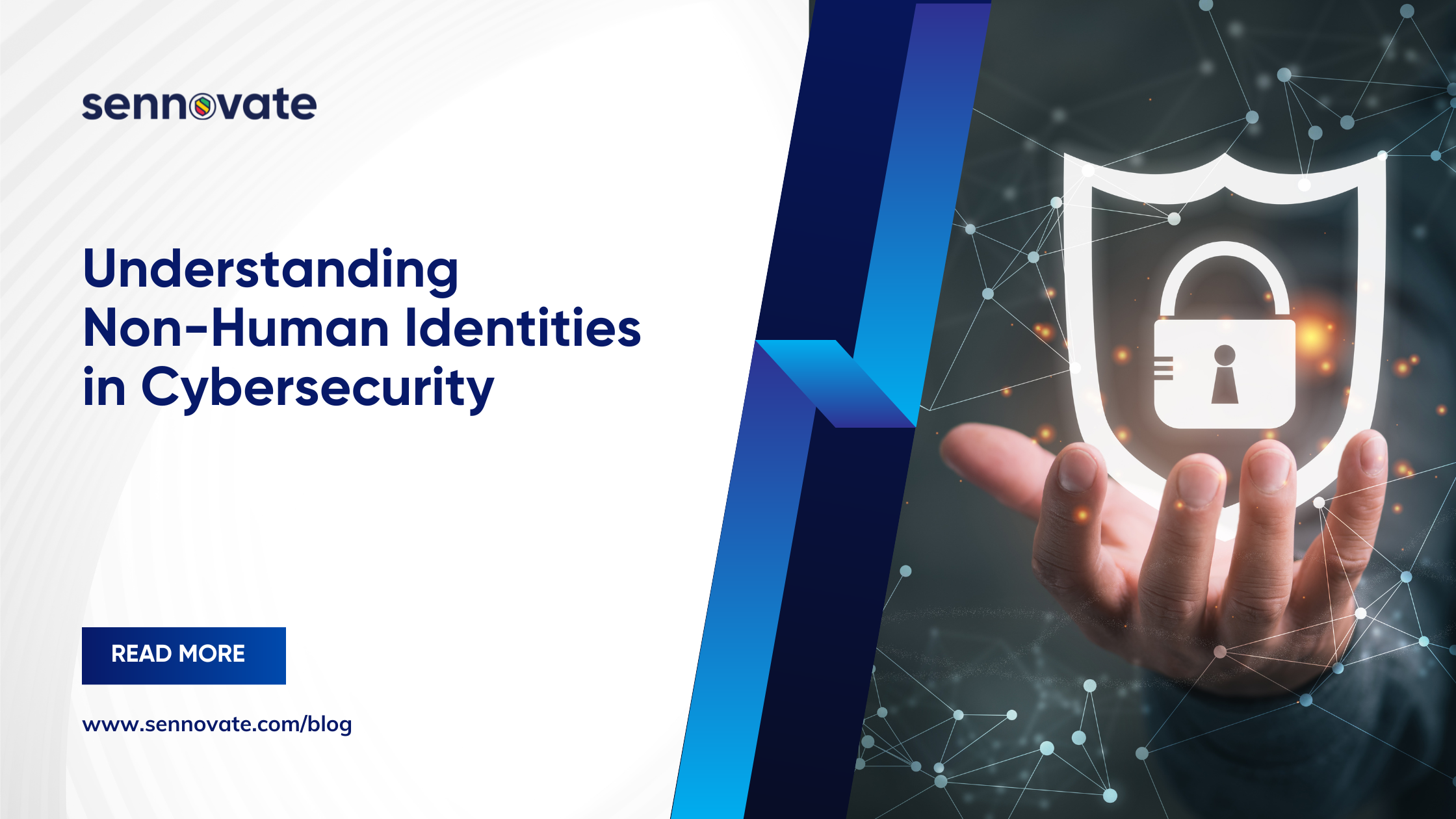

Understanding Non-Human Identities in Cybersecurity
In this digital world, where innovation and challenges coexist, non-human identities like artificial intelligence (AI), automated systems, and virtual agents have become indispensable. They bring efficiency and convenience, but there’s another side – a shadowy realm where cyber threats from non-human actors are on the rise. In this exploration, let’s shine a light on the dark corners of non-human identities and the cyber threats they might unleash.
Intelligent Threats from Artificial Intelligence:
Picture a renegade intelligence, learning and evolving on its own – that’s the essence of AI-driven cyber threats. As AI algorithms become more sophisticated, they autonomously devise strategies to breach security measures, creating a dynamic and formidable digital adversary.
Automated Systems and the Scale of Attacks:
Think of non-human entities, like automated scripts and bots, as orchestrating attacks on a scale beyond human capabilities. From massive Distributed Denial of Service (DDoS) assaults to relentless brute force attempts, these automated processes can overwhelm traditional security defenses, posing a significant challenge for detection and mitigation.
Virtual Agents as Trojan Horses:
Imagine virtual agents and avatars as friendly digital companions, but beware – cybercriminals can exploit them to deceive unsuspecting users. These entities can act as digital wolves in sheep’s clothing, leading to social engineering attacks, phishing schemes, and other forms of cyber deception.
Service Accounts as Silent Intruders:
Consider service accounts as trusted colleagues in the digital workspace, but they can unwittingly become conduits for cyber intruders. Compromised service accounts may offer entry points for malicious actors, allowing them to move undetected within a network.
AI-Powered Social Engineering:
Envision non-human entities with AI capabilities crafting convincing social engineering attacks. Picture receiving tailored phishing emails or messages designed to exploit your preferences, blurring the lines between legitimate and malicious communication.
Adversarial AI and Intelligent Malware:
Think of adversarial AI as a digital trickster designed to outsmart traditional security measures, giving rise to intelligent malware. This malware adapts its behavior to avoid detection, creating a formidable opponent in the ongoing cat-and-mouse game between cybersecurity professionals and malicious actors.
Automated Data Theft and Privacy Concerns:
Consider non-human entities engaged in automated data theft as potential privacy invaders on a large scale. This introduces significant ethical concerns as personal information, often handled by these entities, becomes a prime target for cybercriminals.
Legal and Ethical Implications:
The use of non-human entities in cyberattacks introduces legal and ethical complexities. Attribution becomes a challenge, making it difficult to distinguish between attacks orchestrated by humans and those carried out by automated systems. Navigating this ethical landscape is essential for responsible development and use of these entities in our interconnected digital world.
Let’s explore practical remedies against cyber threats from non-human actors, encompassing artificial intelligence, automated systems, and virtual agents:
Advanced Threat Detection Systems:
Think of advanced detection systems as vigilant guardians, crucial for identifying and mitigating cyber threats. They use machine learning and behavioral analysis, proactively defending against the ever-evolving landscape of AI-driven attacks.
Behavioral Analytics for Anomaly Detection:
Imagine behavioral analytics as a watchful companion, observing the activities of non-human entities. It promptly detects anomalies signaling potential cyber threats, enabling a swift response to safeguard our digital space.
Secure Authentication Mechanisms:
Consider strengthening authentication as providing a robust fortress against unauthorized access, ensuring both human and non-human entities face stringent multi-factor authentication, minimizing the risk of compromised accounts.
Regular Security Audits and Assessments:
Regular security audits act as routine health check-ups, ensuring our defense measures remain effective and adaptable to the dynamic cyber threats introduced by AI, automated systems, and virtual agents.
Encryption for Data Protection:
View end-to-end encryption as a protective shield for sensitive data handled by non-human entities. It renders intercepted information unreadable, creating a secure fortress and reducing the risk of data breaches.
Adaptive Identity and Access Management (IAM):
Adopting adaptive IAM solutions is akin to tailoring access permissions based on the unique behavior of entities, minimizing the risk of unauthorized access. Think of it as a personalized key to the digital realm.
Ethical Hacking and Penetration Testing:
Picture ethical hacking and penetration testing as proactive guides, identifying vulnerabilities before malicious actors can exploit them. This proactive approach keeps us a step ahead of potential threats.
Continuous Security Training:
Consider continuous security training as a knowledge boost for the personnel managing non-human entities. It’s like an ongoing empowerment program, ensuring they stay informed about emerging threats and can navigate the digital landscape effectively.
AI-Powered Security Solutions:
Harnessing AI in cybersecurity is like employing a digital ally. AI-driven security solutions analyze vast datasets, detect patterns, and respond in real-time, providing a resilient defense against sophisticated non-human cyber adversaries.
Collaboration and Information Sharing:
Foster collaboration within the cybersecurity community as akin to a neighborhood watch. By sharing insights and threat intelligence, we collectively stay informed about emerging threats, creating a strong community defense against non-human cyber threats.
Conclusion
As we navigate the intricate world of non-human identities, the looming shadow of cyber threats calls for recognition and action. Cybersecurity professionals, businesses, and individuals must acknowledge the evolving nature of these threats and implement adaptive security measures. Defending against non-human cyber threats involves not only technological solutions but also shaping ethical frameworks and regulations to guide their responsible development and use. By acknowledging the shadows, we can collectively illuminate a safer path forward in the age of non-human cyber adversaries.
Learn more about Non-Human Identities and how to secure them, Sennovate experts are just a call away!
We provide worldwide businesses with IT Security Transformation and Infrastructure solutions. Backed by global partnerships and a library of 2000+ integrations, we’ve managed 10M+ identities, 10K+ threats and offered top-tier cybersecurity that saves time and money. Enjoy seamless integration across cloud applications and an all-inclusive pricing model covering product, implementation, and support. Questions? Consultations are free. Contact us at [email protected]or call +1 (925) 918-6618. Your cybersecurity upgrade starts here.



